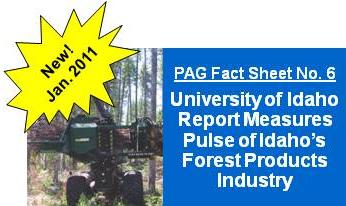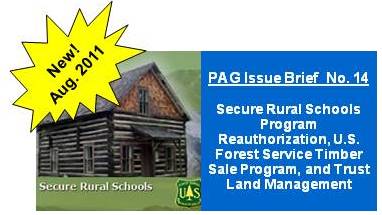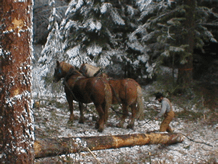Derek’s comment on a previous post reminded me that I thought the topic of state/federal differences in management had been studied a while back. I thought perhaps by the University of Idaho Policy Analysis Group, and perhaps by folks in Oregon and Washington. While looking around on their site, I found a list of recent studies they had done:
Policy Analysis Group (PAG) Reports
1. Idaho’s endowment lands: A matter of sacred trust (March 1990, second edition July 2011)
2. BLM riparian policy in Idaho: Analysis of public comment on a proposed policy statement (June 1990).
3. Idaho Department of Fish and Game’s land acquisition and land management program (October 1990).
4. Wolf recovery in central Idaho: Alternative strategies and impacts (February 1991).
5. State agency roles in Idaho water quality policy (February 1991, with separate Executive Summary).
6. Silver Valley resource analysis for pulp and paper mill feasibility (October 1991).
7. A national park in Idaho? Proposals and possibilities (June 1992).
8. Design of forest riparian buffer strips for protection of water quality: Analysis of scientific literature (June 1992).
9. Analysis of methods for determining minimum instream flows for recreation (March 1993).
10. Idaho roadless areas and wilderness proposals (July 1993).
11. Forest health conditions in Idaho (December 1993, with separate Executive Summary).
12. Grizzly bear recovery in Idaho (November 1994).
13. Endangered Species Act at the crossroads: New directions from Idaho case studies (October 1995, with
separate Executive Summary).
14. Idaho water quality policy for nonpoint source pollution: A manual for decision-makers (December 1996, with
separate Executive Summary).
15. Guidelines for managing cattle grazing in riparian areas to protect water quality: Review of research and best
management practices policy (December 1997).
16. History and analysis of federally administered land in Idaho (June 1998).
17. Public opinion of water pollution control funding sources in Idaho (December 1998).
18. Toward sustainable forest management: Part I – certification programs (December 1999).
19. Toward sustainable forest management: Part II – the role and effects of timber harvesting in Idaho
(December 2000).
20. Taxing forest property: Analysis of alternative methods and impacts in Idaho (November 2001).
21. Endowment fund reform and Idaho’s state lands: Evaluating financial performance of forest and rangeland
assets (December 2001).
22. Forest resource-based economic development in Idaho: Analysis of concepts, resource management policies,
and community effects (May 2003).
23. Comparison of two forest certification systems and Idaho legal requirements (December 2003).
24. Forest fire smoke management policy: Can prescribed fire reduce subsequent wildland fire emissions?
(November 2004).
25. Delisting endangered species: Process analysis and Idaho case studies (October 2005).
26. Idaho’s forest products business sector: Contributions, challenges, and opportunities (August 2006).
27. Off-highway vehicle and snowmobile management in Idaho (October 2008).
28. Analysis of procedures for residential real estate (cottage site) leases on Idaho’s endowment lands (Oct. 2008).
29. Public land exchanges: Benefits, challenges, and potential for Idaho (December 2009).
30. Bighorn sheep and domestic sheep: Current situation in Idaho (January 2010).
31. Accounting for greenhouse gas emissions from wood bioenergy (September 2010).
I know I’ve mentioned the work of this group before on this blog, but there are numerous reports that relate to topics of current interest to us.







